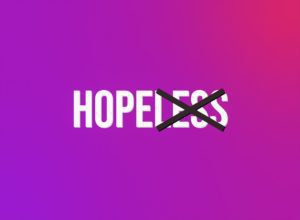Ketamine has been found to be a safe and effective treatment for depression when administered via more than half a dozen different methods or “routes”¹. Of these, intravenous (IV) ketamine — that is, injected into a vein — is the most common, and the bulk of depression research conducted with ketamine is with this route of administration. This is because it allows for very precise dosing since we know with perfect accuracy how much gets into your blood circulation and therefore your brain. In medical terminology, it has 100% bioavailability.
After IV, the most common are intramuscular (IM) and intranasal (IN) ketamine, followed by sublingual and oral ketamine. Of these, IM ketamine is the most similar to IV with ~90-95% bioavailability, and is what we offer at the EntheoMed Ketamine Assisted Therapy Suite. Figures drop off with IN (25-50%), sublingual (~20-30%), and oral (~10-20%) ketamine.
In addition to bioavailability, another important characteristic is how fast the effects kick in and how long they last. While the effects of IV and IM ketamine last up to around two hours, effects with IN, sublingual, and oral can persist for up to four hours. See below for a summary of each route of administration:
Intravenous (IV) Infusion
Bioavailability: 100% ² ³
Onset of Effects: 10 minutes
Duration of Effects: 1-2 hours
Intramuscular (IM)
Bioavailability: ~90-95% ⁴
Onset of Effects: 5 minutes
Duration of Effects: 1-2 hours
Intranasal (IN)
Bioavailability: ~25-50% ³
Onset of Effects: 5 minutes
Duration of Effects: 2-4 hours
Sublingual
Bioavailability: ~20-30% ⁵
Onset of Effects: 10 minutes
Duration of Effects: 2-4 hours
Oral
Bioavailability: ~10-20% ⁵ ⁶
Onset of Effects: 30 minutes
Duration of Effects: 2-4 hours
You might be wondering, why the need for alternative routes of administration if IV ketamine is the best?
It comes down to accessibility. IV ketamine takes place in the context of a hospital-affiliated medical operating room (i.e. a room that is used for surgery) and requires a physician to be present, making it the hardest to access and the most expensive. IM is more accessible and less expensive in that it does not require an operating room, despite having nearly the same bioavailability and effects duration as IV ketamine. The three non-injected routes are most accessible and patients typically self-administer the drug in the absence of a nurse or physician, but suffer from less dosing accuracy and a sometimes undesirable prolongation of effects.
Another important distinction here is between IN ketamine and all the other routes. IN ketamine — or, more specifically, esketamine — in the form of the nasal spray marketed as Spravato, is the only route that is guaranteed insurance coverage. This is because it is actually the only form of ketamine that has been FDA-approved for depression specifically. The other routes of administration have only received official approval for anesthesia (back in 1970) and their use for depression is designated as ‘off-label’. Note that this doesn’t make their use any less legal; an estimated one in five drug prescriptions in the US are off-label, but off-label drugs are rarely, if ever, covered by insurance. Spravato is therefore the most financially accessible of the routes of administration, although research suggests that it may be less effective than injected forms of ketamine for treating depression⁷.
As mentioned, the EntheoMed Ketamine Assisted Therapy Suite uses IM ketamine, a route that rivals IV ketamine in precision of dosing and length of subjective effects, but is less expensive for the patient and therefore more accessible. We administer IM ketamine in the context of our Odyssey model, which is a ketamine-assisted therapy program that includes ketamine alongside multiple other treatment modalities such as individual and group psychotherapy, yoga, and breathwork. It is an experience- and human-centered approach based on the latest scientific perspectives aimed at best leveraging the ketamine experience to create lasting positive change.
Written by Manesh Girn for EntheoTech
REFERENCES
(4) Bioavailability, pharmacokinetics, and analgesic activity of ketamine in humans
(5) Bioavailability of Ketamine After Oral or Sublingual Administration
(6) Oral Ketamine for Depression, 1: Pharmacologic Considerations and Clinical Evidence














